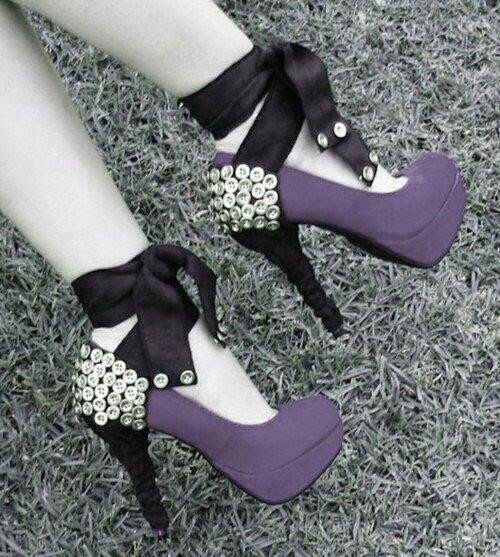The high heels shoes have a rich history that spans hundreds of years, and surprisingly some of the most tumultuous events happened in the last few decades--not counting Marie Antoinette wearing heels to her execution after Napoleon had made them illegal. It was a modest heel though, no more than two inches high, which was nothing compared to some of the stiletto heels you'll find on the market today.
In the first part of the twentieth century, the preference among women was for keeping the heel and the toe close to the ground by wearing what we call flat-soled shoes. All that changed when the Roaring Twenties came roaring in.
For one thing dresses got just enough shorter to expose the feet and ankles, and of all the choices history had offered up prior to the twenties, women gravitated toward the high heels of King Louis XIV--the high, shapely heel with elaborate stitching and decor.
The onset of the Great Depression in the 1930s toned everything down, including the high heel. The tall heels of the 20s got smaller, more compact and wider. Hollywood's influence was coming on the scene and was characterized by a great deal of glamour and glitz. It appeared the French influence was on its way out and America was coming into its own by redefining the high heel independent of the French influence.
World War II hit in the 1940s, and that certainly took fashions down yet another notch. Luxury items were hard to come by and high heels were no exception. Not surprisingly, after the resolution of the world war, it was a French designer, Christian Dior, who stepped up and designed a new look for the heel. He took the shoe of Louis XIV and gave it a low cut vamp and a stiletto heel. This is when the sexual symbolism of the high heel really caught fire.
While it was Dior's shoe that made the stiletto famous, in the 1960s designers started incorporating the dagger-like heel onto boots to compliment the new and popular fashion of mini-skirts. Nancy Sinatra summarized the essence of the new trend with a hit tune, "These Boots Are Made for Walkin'," that had a hook-line which brashly stated, "One of these days these boots are gonna walk all over you."
It was the movement known as Women's Liberation, or Feminism that put the sexy heels back out of favor. High heels came to represent all that the new women's movement found reprehensible, namely the position of women as being secondary to men and existing only for the pleasure and entertainment of men. The objections of the Feminists included the observation that heels were little more than a set of handcuffs for the feet, which kept women in constant danger from predatory males.
The women's heels that survived the aggressive women's movement were thick and low to the ground and the toes were square instead of pointed. Also contributing to the radical shift in shoe styles was the hippy movement which leaned toward the natural, with simple clothing and minimal adornments. The high heel was not a part of that look.
These influences began to wane in the 1980s as a new generation took hold. Women returned to the fashion heels, maintaining that they were wearing them because they wanted to, not because it was a fashion being dictated to them by a male dominated world of designers.
This gave not just the heel, but shoe styles in general a level of design freedom never before experienced and consequently there are more styles and fashions of footwear available today than ever in the history of the world.

没有评论:
发表评论